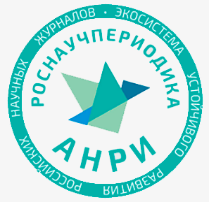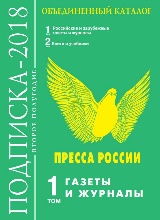ПРИМЕНЕНИЕ МЕТОДОВ ИНТЕЛЛЕКТУАЛЬНОГО АНАЛИЗА ДАННЫХ В ЭПИДЕМИОЛОГИИ
Аннотация
В статье рассматривается вопрос использования методов интеллектуального анализа данных при исследовании эпидемических процессов. Пандемия коронавирусной инфекции COVID-19, вызванная новым штаммом коронавируса SARS-CoV-2, стала причиной сверхбыстрого роста числа заболевших и высокой смертности во всем мире. Развитие пандемии поставило перед специалистами здравоохранения новые задачи: разработать диагностические и лечебные алгоритмы, а также меры и средства профилактики. В связи с этим особое внимание уделяется внедрению информационных систем в медицинскую практику, а также применению технологий интеллектуального анализа данных с целью при принятии решений, связанных с противоковидными мерами, повышения качества оказываемой медицинской помощи. Одним из методов интеллектуального анализа данных является кластерный анализ. Кластерный анализ довольно широко используется при изучении различий между регионами по показателям заболеваемости и смертности населения и другим показателям здоровья населения. Авторами проведено исследование заболеваемости коронавирусом жителей 85 регионов ЦФО с помощью кластерного анализа. Предложенная авторами технология может быть применена в деятельности региональных департаментах здравоохранения РФ
Литература
Senko O.V., Kuznetsova A.V., Voronin E.M., Kravtsova
O.A., Borisova L.R., Kirilyuk I.L., Akimkin V.G. Methods of data mining in studies of the COVID-19 epidemic.
Journal. Belarusian State University. Math. Inf. 1 (2022),
-96. https://doi.org/10.33581/2520-6508-2022-1-83-96 .
Vinogradov K.A., Artyukhov I.P., Rossiev A.A., Rossiev
D.A. Cluster analysis of administrative territories by indicators of health and health protection (on the example of the
Krasnoyarsk Territory). Siberian Medical Journal (Irkutsk).
Vol. 23, N 4. P. 68-75.
Yanchevskaya E.Yu., Mesnyankina O.A. Mathematical
modeling and forecasting in the epidemiology of infectious
diseases. Bulletin of the Peoples' Friendship University of
Russia. Series: Medicine. 2019. Vol. 23. N 3. P. 328-334.
DOI: 10.22363/2313-0245-2019-23-3-328-334.2.
Kotova A.V., Ksenofontova O.L., Smirnova N.V. Cluster
analysis of the regions of the Russian Federation on the incidence of coronavirus. Collection of scientific papers of
Russian universities "Problems of economics, finance and
production management". 2022. N 51. P. 181-187.
Smirnova E.M., Valinurova A.A., Danilova S.V., Valinurov
T.R. Development of an approach to clustering of districts based
on the KNIME machine learning tool. News of higher educational institutions. Series: Economics, Finance and Production
Management. 2021. N 4 (50). P. 165-175.
Kotova A.V., Ksenofontova O.L. Application of mathematical modeling to the study of the spread of epidemics. Collection of scientific papers of Russian universities "Problems of economics, finance and production
management". 2022. N 50. P. 173-176.
Mirolyubova A.A., Ksenofontova O.L. Neural network architectures for predicting the development of coronavirus infection.
In the collection: Consequences and challenges of the coronavirus pandemic for the technological and socio-economic development of society. Proceedings of the III International Scientificand Practical Conference. Under the general editorship of Candidate of Economics S.V. Shkiotov, Doctor of Economics V.A.
Gordeev. Yaroslavl, 2020. P. 375-380.
Kurkina E.S., Koltsova E.M. Mathematical modeling and
forecasting of the spread of the COVID-19 coronavirus epidemic. Designing the future. Problems of digital reality:
Proceedings of the 4th International Conference (February
-5, 2021, Moscow). Moscow: M.V.Keldysh IPM, 2021. P.
-192. DOI: 10.20948/future-2021-17.
Ermolaev M.B., Popov I.A. Experience in predicting the
dynamics of coronavirus infections in Russia on based on Sshaped models // Collection of scientific papers of Russian
universities "Problems of economics, finance and production management". 2020. N 46. P. 186-188.
Ilchenko A.N., Ksenofontova O.L., Kanakina G.V.
Workshop on economic and mathematical methods. Study
guide. Moscow: Finance and Statistics. 2014. 288 p.
Leonenko V.N. Mathematical epidemiology. St. Petersburg: ITMO University, 2018. 38 p.
Mirolyubova A.A., Ermolaev A.D., Prokofiev M.B.
ARIMA - forecasting the demand of a manufacturing enterprise. Modern high-tech technologies. Regional application.
N 2(66). P. 50-55. DOI 10.6060/snt.20216602.0007.
Abramova E.A. Features and opportunities for the development of self-employment of the population of the Russian
Federation in the conditions of the coronavirus pandemic.
Modern high-tech technologies. Regional application. 2021.
N 4(68). P. 6-14. DOI 10.6060/snt.20216804.0001.
Smirnova E.M., Valinurova A.A., Danilova S.V.,
Valinurov T.R. Development of an approach to clustering
of districts based on the KNIME machine learning tool.
Izvestia of higher educational institutions. Series: Economics, Finance and Production Management. 2021. N 4(50).
P. 165-175. DOI 10.6060/ivecofin.2021504.579.
Narkevich A.N., Serov A.A., Vinogradov K.A. [et al.]
The use of self-organizing Kohonen maps for analyzing the
state of Russia's regions for socially significant diseases.
Social aspects of public health. 2016. N 4(50). P. 9.
Ermolaev M.B., Khomyakova A.A., Belova A.D.,
Serkova Yu.A. Development of an algorithm for intellectual decision support based on a system approach. News of
higher educational institutions. Series: Economics, Finance
and Production Management. 2022. N 1(51). P. 138-146.
DOI 10.6060/ivecofin.2022511.594.
Korkhmazov V.T., Perkhov V.I. Results of using cluster
analysis to assess differences between the subjects of the
Russian Federation in terms of mortality from COVID-19.
Innovative medicine of Kuban. 2023. N 1. P. 65-71.
https://doi.org/10.35401/2541-9897-2023-26-1-65-71 .
Korkhmazov V.T., Perkhov V.I. Differentiation of Russian
regions by the level of standardized mortality rates from
COVID-19 in 2021. ORGZDRAV: news, me-niya, training. Bulletin of the Higher School of Economics. 2022. Vol. 8, N 4. P.














